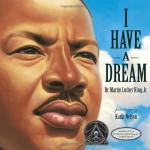|
This section contains 827 words (approx. 3 pages at 400 words per page) |

|
The speech "I Have a Dream" by Martin Luther King Jr. closed the March on Washington for Jobs and Freedom and immediately came to symbolize the civil rights movement. By the time of the march, King's reputation was already nationally known; in a 1962 New York Times article titled "Spokesman for Negroes; Martin Luther King Jr.," King is noted as having "power and prestige approach[ing] the dimensions of Booker T. Washington." For many Americans, King was the face of the civil rights movement. His academic training and experience as a pastor helped him become a great orator. He drew on biblical, historical, political, and educational images and themes in his speeches, which allowed him to reach a wide audience. In "Voice Merging and Self-Making: The Epistemology of 'I Have a Dream,"' Keith Miller refers to this mix of influences, stating "No other liberal or radical...
|
This section contains 827 words (approx. 3 pages at 400 words per page) |

|




